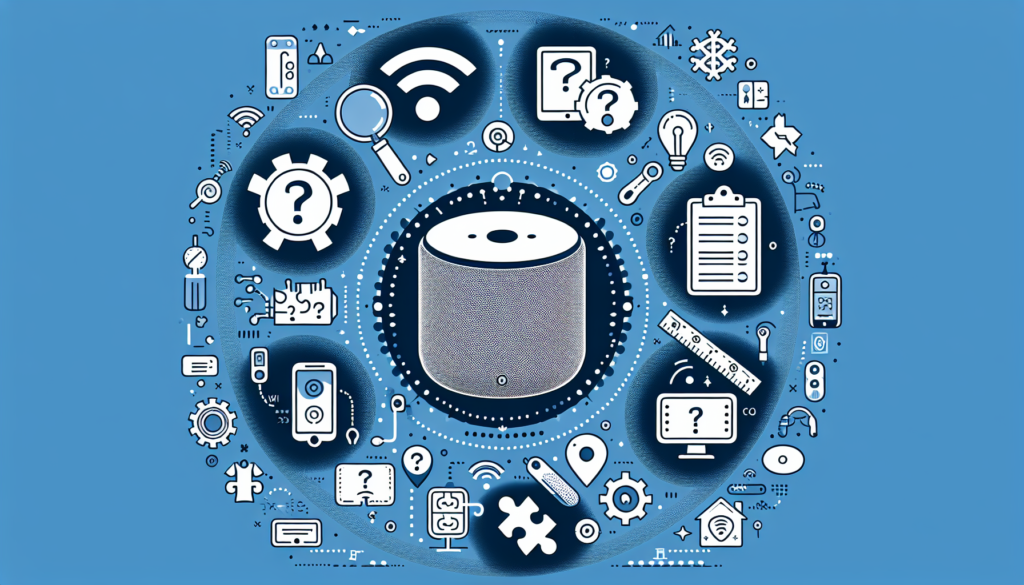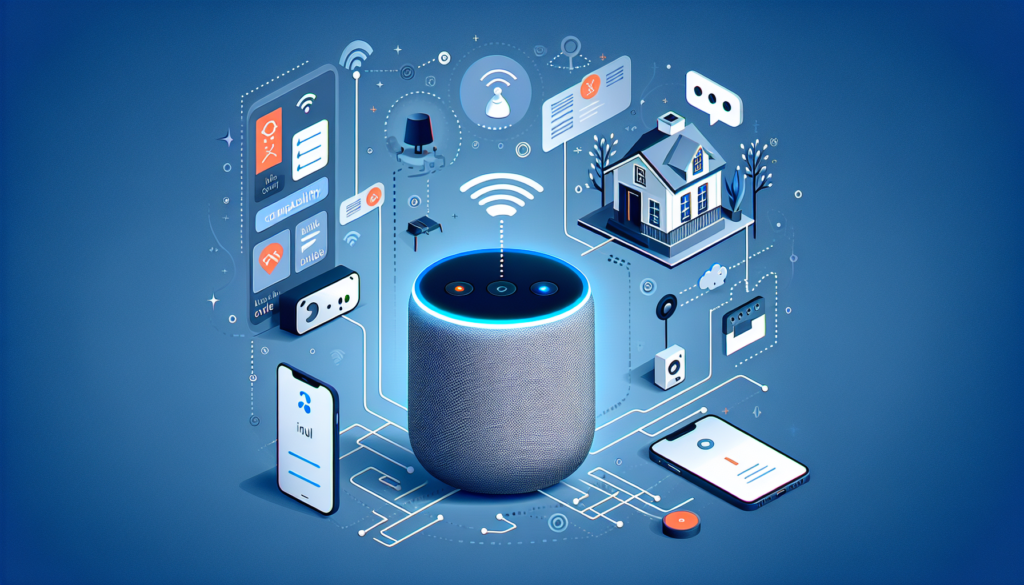So you’ve just purchased a new smart speaker and you’re excited to set it up and start enjoying all its amazing features. But sometimes, the process of setting up a smart speaker can present a few challenges. Don’t worry though, because in this article, we’ll provide you with some troubleshooting tips that will help you tackle any setup issues you may encounter. From connectivity problems to software glitches, we’ve got you covered! Let’s jump right in and ensure a seamless experience with your new smart speaker.
Troubleshooting Tips for Smart Speaker Setup Issues
Setting up a smart speaker can be an exciting endeavor, but sometimes things don’t go as planned. If you’re experiencing issues with your smart speaker setup, don’t worry! We’ve compiled a list of troubleshooting tips to help you get your device up and running smoothly.

Check Power and Connection Issues
The first step in troubleshooting any smart speaker setup issue is to check the power and connections. Ensure that your smart speaker is plugged into a power source, and double-check all the cables and connections. It’s possible that a loose or faulty connection may be causing the problem. Once you’ve confirmed that everything is securely connected, move on to the next step.
Ensure Proper Wi-Fi Connection
A stable and reliable Wi-Fi connection is crucial for the proper functioning of your smart speaker. Make sure that your device is connected to the correct Wi-Fi network and that the signal strength is strong enough. If you’re encountering connection issues, try moving your smart speaker closer to the router or consider purchasing a Wi-Fi extender to improve signal strength in that area of your home.

Update Smart Speaker Firmware
Firmware updates are essential for keeping your smart speaker running smoothly and addressing any bugs or performance issues. Check if there are any available firmware updates for your device and install them if necessary. Firmware updates often include improvements in connectivity, compatibility, and overall functionality, so keeping your smart speaker up to date is crucial.
Check Smart Speaker Volume Settings
If your smart speaker setup seems to be working fine but you’re not getting any sound, make sure to check the volume settings. It’s possible that the volume is too low or completely muted. Adjust the volume using either the physical controls on the device or through the companion app. Also, ensure that the volume on your phone or tablet is not turned down, as this can affect the output of sound from your smart speaker.

Verify Placement and Environment
The placement of your smart speaker can have a significant impact on its performance. Ensure that your device is placed on a stable surface and is not obstructed by any objects that could limit the sound quality or interfere with the microphone. Avoid placing your smart speaker near walls or other sound-absorbing surfaces, as this can negatively affect the audio output. Additionally, keep the device away from sources of interference such as large metal objects or other electronics.
Restart Smart Speaker
Sometimes a simple restart can resolve many issues with smart speaker setups. Try turning off your smart speaker, unplugging it from the power source, waiting for a few seconds, and then plugging it back in. After the device has booted up again, see if the issue has been resolved. Restarting your smart speaker can help refresh its system and clear any temporary glitches that may be causing the problem.

Reset Smart Speaker
If you’ve tried all the above steps and are still facing issues with your smart speaker setup, you may need to reset the device to its factory settings. Keep in mind that resetting your smart speaker will erase all personalized settings and data, so make sure to back up any important information before proceeding. The reset process varies depending on the make and model of your smart speaker, so consult the user manual or visit the manufacturer’s website for specific instructions.
Check Compatibility with Devices
Incompatibility issues can sometimes arise when trying to connect your smart speaker to other devices. Ensure that your smart speaker is compatible with the operating system of your smartphone, tablet, or computer. Check the manufacturer’s website or consult the user manual to verify compatibility requirements. Additionally, make sure that any devices you’re trying to connect to your smart speaker are also up to date with the latest firmware and software updates.

Update Smart Speaker App
If you’re using a companion app to control your smart speaker, it’s important to keep the app updated as well. App updates often include bug fixes, performance improvements, and new features that can enhance the overall user experience. Check the app store for any available updates and install them if necessary. Updating the app can sometimes resolve compatibility issues and ensure seamless communication between your smart speaker and your mobile device.
Contact Smart Speaker Support
If all else fails, don’t hesitate to contact the support team of your smart speaker manufacturer. They have the expertise to assist you with any complex issues or provide further troubleshooting guidance specific to your device. Check the manufacturer’s website for contact information, such as phone numbers or live chat support options. Be prepared to provide them with detailed information about your smart speaker setup and the issues you’re encountering for a quicker and more efficient resolution.
By following these troubleshooting tips, you’ll be well on your way to resolving any setup issues with your smart speaker. Remember to check the power and connection, ensure a proper Wi-Fi connection, update firmware and app versions, and verify placement and device compatibility. If all else fails, don’t hesitate to reach out to the manufacturer’s support team for additional assistance. Enjoy the convenience and versatility of your smart speaker once it’s up and running smoothly!










